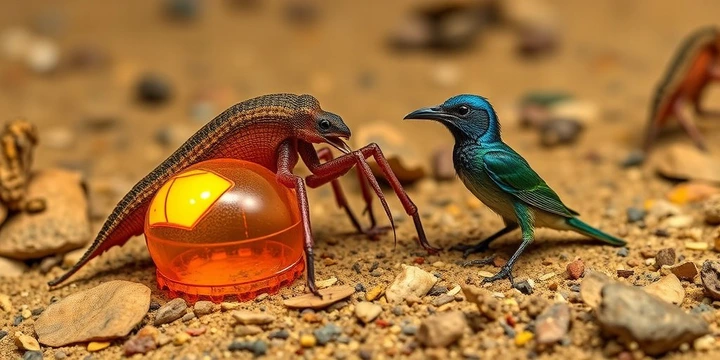Cretaceous Chewing Lice Eggs Reveal Insights into Early Coevolution with Primitive Avian Species

View pictures in App save up to 80% data.
The finding of fossilized chewing lice eggs in mid-Cretaceous Burmese amber has ushered in a new era in our comprehension of ectoparasitism and the evolutionary lineage of parasites. A research team spearheaded by Prof. Diying Huang from the Nanjing Institute of Geology and Palaeontology, part of the Chinese Academy of Sciences, has uncovered conclusive evidence of lice that infested early feathered vertebrates during the Mesozoic period. This discovery not only emphasizes an essential chapter in the story of evolution but also illuminates the intricate dynamics between parasites and their hosts.
Fossil records of parasite-host relationships from the Mesozoic era have been remarkably scarce, especially concerning those parasites that thrived on feathers. The discovery of fossilized louse eggs marks a significant advancement in understanding the history of lice, which are notoriously challenging to analyze because of their fragile structure and specific preservation requirements. The careful research that culminated in this finding included the analysis of amber samples that contained these remarkable specimens, allowing scientists to acquire deep insights into the evolutionary processes occurring during that time.
During their microscopic analysis, the research team found that the amber sample contained numerous fossilized lice eggs affixed to the barbs of feather remnants. Each feather barb exhibited a consistent pattern of elongated eggs that were astonishingly arranged along the shaft, similar to present-day lice yet exhibiting distinct traits. Analyzing the configuration and adhesion of these eggs has been crucial in differentiating them from their modern counterparts, providing new insights into the evolutionary changes of these ectoparasites.
Professor Huang's research team not only discovered these ancient eggs but also conducted a detailed morphological analysis of the preserved feathers, indicating their probable connection to enantiornithines—an ancient lineage of birds that thrived during the Mesozoic era. These results offer concrete evidence of the parasitic interactions that existed between these birds and lice, demonstrating that early feathered vertebrates were susceptible to ectoparasitism far earlier than had been previously recognized.
Lice, which are prevalent ectoparasites in contemporary ecosystems, primarily target birds and mammals. This highlights the importance of examining their evolutionary history to gain insights into host-parasite interactions. Recent research indicates that the lineage of modern lice originated around 99 million years ago, during the Mesozoic era. This era represented a pivotal evolutionary phase when lice evolved from free-living organisms to parasites, developing specialized adaptations for attachment and reproduction on their hosts.
The finding of fossilized eggs is groundbreaking, as previous discoveries of adult lice trapped in amber did not offer the same level of proof regarding the origins of parasitism. The eggs identified in this research rein